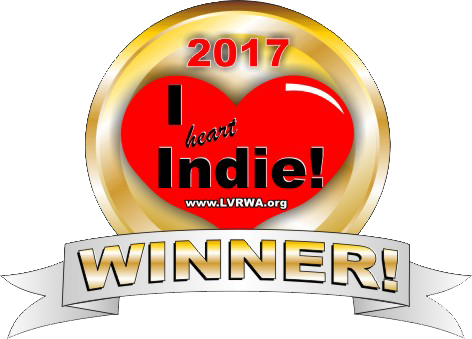|
I’m delighted to announce that the first review of Clingstone has just come in! Click here to read the full review at KDH Reviews! "Lovers of historical romance will adore Clingstone." -KDH Reviews
0 Comments
 Many years ago, I kept a journal. It was mostly a travelogue. I came across it recently and thought some of the entries might be interesting to reproduce here, in my writer’s blog. One in particular detailed my visit to Gettysburg National Cemetery on June 16, 2002. In keeping with the spirit of my civil war novel, here is the entry from that day: Today I saw the actual Gettysburg battlefield. It was both amazing and poignant to see, and at moments, unexpectedly ordinary to view its grassy slopes and valleys. I think that’s what surprised me the most, those mundane moments in which I marveled over the fact that all these years and generations later, it is still only land, and its significance exists merely because we allow it. Or is it so much more than that? Do the heightened emotions of battle, the blood of thousands soaking into the ground, somehow change the energy of a piece of land, even nearly one hundred-forty years after the fact? A part of me expected to feel the fine hairs on my arms stand on end as I walked through the tall wrought-iron fence enclosing the Gettysburg National Cemetery. I thought I might even feel the shiver of an otherworldly presence as I viewed the unmarked graves belonging to soldiers who had fallen at Gettysburg and were never identified, but mostly I felt pensive. It seemed slightly inappropriate snapping photographs of those small, white marble markers jutting from the ground with only an apathetic number to distinguish its cold occupant. The battlefield itself was enormous—acres upon acres of gently sloping hills, valleys, and woodland. Much of the eighteen-mile battlefield is historically accurate: stone and wooden fences and hundreds of cannons aiming across the fields, eternally unleashing mortar upon hapless ghostly soldiers. Everything is still and quiet now, but I could easily imagine a glimmer of what it might have been like; I reflected on the noisy tourists around me and winced at our collective indelicacy. Little Round Top, though…a lovely spot where the wind blew constantly and made the grass and wildflowers dance and ripple. If a ghostly stain indeed exists at Gettysburg, that stain did not linger at Little Round Top even though historically, it was a very bloody place. The large hill rose prominently above the entire valley. Thousands of ancient gray boulders were strewn across the hillside, as if the earth had split and burst eons ago and expelled the granite from its wounds. Sometimes a piece of land can feel like a living thing with a heartbeat and memories, and that is what I imagined as I stood on that hill and looked out over the parkland. The earth beneath my feet seemed to breathe. I suspected its vast and varied memories had been collected throughout the ages with quiet precision, and three bloody days almost one hundred-forty years ago were mere flickers of awareness in comparison to all that had transpired there over millions of years. It was a comforting, anonymous thought.  I like discovering lost things. It’s why I enjoy compiling the historical research for my novels. It’s the challenge, I think, like an Easter egg hunt across history. I sift through statistics and sepia photographs and historical testimonies armed with the studious mind of an academic and the insensitive heart of a voyeur. I revel in all its grittiness and squalor, its human foibles and terrible injustices and glorious triumphs, all viewed through the safe perch of my 21st century life. I’ve discovered oodles of appalling trivia about dental care, feminine hygiene products, and the disposal of organic waste that horrify my modern sensibilities, and yet I can’t wait to inflict said horrors upon my unsuspecting heroes and heroines. I have a bit of the perverse in me, but thankfully expressed only on paper. And yet those bits of historical minutiae, be they disgusting, charming, or simply sobering, breathes life once more into beings that have long since been reduced to old daguerreotypes and yellowing diary pages. I write historical romance, but it would probably be more accurate to say my genre is “historical fiction with a strong romantic element.” If, like me, you think that mouthful sounds terribly unwieldy, then you’ll understand why I’m content simply saying I write historical romance. Still, my narratives tend to involve ambitious undertakings, impossible feats of human willpower, and no shortage of hardships and adversity, and that probably makes my novels starker than most romances. Consider the circumstances that take place in Clingstone. The American Civil War has always intrigued me as a setting for a potential story, but what could I contribute that was different? Literature already had its Scarlet O’Hara, its Kunta Kinte, its Orry Main and George Hazard. Enter the plight of the Georgia mill workers. I had considered myself well-versed in this period of American history and was surprised when my research introduced their story. It was one hell of an Easter egg. It horrified me. It intrigued me. It was too unbelievable to be real. My understanding of justice and legal precedent balked at workers being charged with treason simply because they were employed in mills that had textile contracts with the Confederacy. They were arrested, convicted without a trial, and deported to northern prisons. Most were women. Truth truly is stranger than fiction. As my heroine would inevitably ponder, was it deliberate cruelty or government ineptitude? I’ve had a long time to think about their situation, and I’m still not entirely certain which is the answer. Perhaps both. Who am I? First and foremost, I enjoy bashing my head against a wall.
Allow me to expound. I wrote my first historical romance manuscript while still in college. I sent it to multiple publishers; in a nod toward nostalgia and self-flagellation, I still have their form rejection letters tucked away in an old manila folder somewhere. Seventeen years and numerous manuscripts later, I was still submitting manuscripts that no one ever read, although the universal rejections had metamorphosed into much more efficient automated email responses. Ah, the march of progress! And why did I continue to do this, you ask? Presumably I was concussed by this point, because I honestly don’t know. For years, family members had been saying, “Why don’t you self-publish?” My slightly defensive answer was always, “I will someday. But there’s one more agent I want to query.” And so I continued. Bashing. My head. Against a wall. Do you know the definition of insanity? Trying the same thing over and over again, but expecting a different result. I have officially decided to end the insanity. I have edited, and rewritten, and copy-edited, and rewritten again, and researched-researched-researched until there’s nothing left to do but launch my book baby out into the internet ether, to be loved or ignored, or some variation thereof. It isn’t the first manuscript I wrote all those years ago, but it’s unquestionably my favorite. I hope it will become one of your favorites, too. |
Marti Ziegler
|




 RSS Feed
RSS Feed


